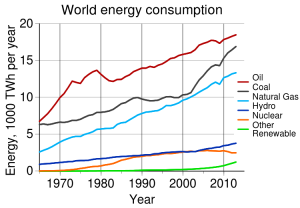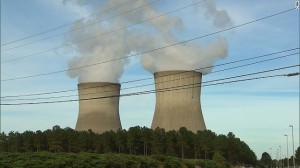.jpg) |
Illustration: John Spooner AAP
|
Currently, domestic
undergraduate students in Commonwealth supported places at public Australian
universities, pay a contribution of their tuition fees and the
Australian Government subsidises the rest. The student contribution is set by the
government and varies according to discipline category of the courses studied,
with the top band including law, accounting, economics and commerce charging
$10,085 student contribution per year.
Earlier in 2013 the Grattan
Institute published Graduate Winners, a report which
suggested that government subsidies for tertiary education should be cut, given
the already strong incentives to pursue higher education, and the low net public
benefits that students of certain disciplines accord to society.
The acceptance in the G08 university community of the need for reform is at a level rarely seen on any
issue. The directions for reform are similarly clear. As Melbourne University
vice-chancellor Glyn Davis has pointed out, while universities have been hoping
and lobbying for years for more government money, the decline in funding per
student seems inexorable. There is therefore now a broader acceptance of the
need for fee deregulation, particularly with the opening of university
education to thousands more students, and the increasing private benefit to
those who complete university studies.
The Kemp-Norton
recommendation seeks to level this playing field.
The recommendation suggests that it would have a
number of benefits:
First, it would reduce
the cost to students of studying for higher education qualifications outside
the university system. At present, most of these students have to cover the
full cost of their course through the fees they pay, which usually means that
they pay more than their university-enrolled counterparts. It’s hard to see the
logic of this, given that these students are more likely to come from
disadvantaged backgrounds. This is a great way of promoting access to higher
education.
Second, the proposal
would introduce more competition into the higher education market. The
Kemp-Norton review itself celebrates the effect that increased market forces
have already on the sector, especially in lifting quality and encouraging
innovation. But the impact of the market is highly constrained at present — by
the near-monopoly given to universities over government-funded places, and by
the controls imposed on universities in setting student charges. The
Kemp-Norton recommendation removes the first these constraints and paves the
way for removal of the second.
Third, greater
competition will bring with it greater diversity of institutions. For example,
it would allow some institutions to focus entirely on teaching, unlike
universities, which have dual missions of teaching and research. This would
allow more specialised institutions to develop, addressing particular skills
needs or student cohorts. Universities would have even greater incentive to
play to their strengths, to improve quality and to articulate more clearly the
benefits they offer compared to other types of provider — such as access to the
country’s leading researchers in the classroom, opportunities to study in great
universities around the world and qualifications that are highly sought after
by employers.
Applying some basic economics of commercial
business some of the deregulation issues will be addressed. Generally speaking
public investment and subsidies are typically inefficient but in some cases
such as education they are seen as essential to growth (Espinoza, 2012). Some
subsidies however create perverse mechanisms in dynamic contexts.
The political economy of subsidies deals
with the central question of how the political process interacts with the
heterogeneity of interests in society to allocate subsidies and determine the
pace of their removal. More specifically, do the decisions of elective
officials always lead to the socially optimal use of subsidies in the manner
described earlier?
The conclusions of a number of studies
(e.g. see Gardner, 1996) are that subsidisation is correlated with the
political influence of the beneficiaries (e.g. retirees and the elderly in the
case of social security or middle and upper class groups in the case of
educational subsidies). Or in other terms the class of the graduates and the class of the university.
A hierarchy of institutions results from
their ‘donative-commercial’ revenue sources and from the radical differences
among them in their successes -- past and present in raising and accumulating
donative resources. These differences in donative wealth, in turn, strongly
influence their current commercial circumstances. Schools that get a lot of
donated money from endowments and legislatures and gifts can and do sell, in
their commercial role, at a lower price or higher quality. “The market” for
higher education is very different, then, from commercial markets and
competitive market forces play out in much different environment. They may
still work, perhaps, but they do so on a strikingly tilted playing field.
Subsidies have wide ranging effects, for
example mortgage subsidies and high wages in the public sector have created
“queues‟: the benefits of landing a public sector job (or getting a subsidised
mortgages) may be so high that some would rather wait and stay unemployed (or
rent an apartment) in the hope of obtaining the coveted benefit later in time
rather than going for an alternative (private sector job; commercial bank
mortgage). Is it really that bad that
there is an increase in university attendance due to low fees? Can we afford
not to be competitive on a global scale in terms of education as wealth?
Distortions are highly inefficient and may
be worsened by further government intervention: for instance, a wave of hiring
in the public sector may decrease labor supply to the private sector (or
increase unemployment) since job seekers understand that the probability of
landing a government job has increased. Therefore, the distributive policies in
the case of education should be evaluated carefully, taking into account both
theory and experience with specific government programs, so that this kind of
egregious distortions be removed. So can this be done with higher education?
Can the market stabilise itself with the help of the government or does it
require intervention?
Perfect competition – competition is
affected between firms if they function in this kind of hierarchical market.
Two things, I think, can safely be said:
that competition will take place largely within segments or ‘bands’ or ‘packs’
of similar schools within the hierarchy and that it will have a very different
character within differently positioned bands. For those market segments toward
the bottom, competition takes rather conventional economic forms – a competition
for customers of ordinary input quality that focuses therefore on numbers, on quantity
of sales, on filling seats. It emphasises price, convenience, and quality for a
customer of modest aims and it is most regionally or ideologically limited. For
market segments at the top of the hierarchy, donative resources are great,
student quality is important and amplified, competition is national, and it
focuses largely on position and maintaining or improving student quality (Clotfelter, 1992).



.jpg)